Update: Before reading anymore, it's recommended to read the first post on Ansible for Networking.
Let’s do a quick walk through.
Here is the playbook.
Now, how many devices and which devices, do you want to test reachability to? remote_hosts is the directory where a file is located that has a list of these devices. It’s that simple.
The task in the play in the playbook just states that each host in the group ‘routers’ is going to test connectivity to each host/destination defined in the file ‘remote_devices’ located in the ‘remote_hosts’ directory. Note: file name must be called "remote_devices" for the destinations. The path can be changed as a variable.
Let’s run the playbook.
To document the results, log files for each device are created. I actually create two log files per device. One detailed log file per device that captures more information than the normal user would want to see and then a simple log file. I’m only going to review the simple log file.
Here are the contents of log_simple_router1 after running the playbook:
And by the way, it took this playbook just under 20 seconds to run. If I wanted, I can probably get that down by a few seconds too. How long does it take today if you want to test reachability to 4 destinations from 3 routers and write down the results? Multiple that by 10, 20, or 100!
We can easily see the results in the simple log file for each ping test. Since I hadn’t shown the remote devices file yet, you can see that I have four devices being tested for reachability. I am testing reachability between all of the routers and then also to google showing there is internet access. And for those who would rather see the output in excel or a different format, that’s possible too. Just means some changes to the module.
Running this playbook also produced log_simple_router2 and log_simple_router3. Those logs files aren’t shown here.
As an alternative and also helpful for debugging, it is possible to run a playbook with a ‘-v’ option to see the data being returned. Here is the output of that:
The user of the playbook, likely a network engineer, would only have to modify the ‘hosts’ file and ‘remote_devices’ file. That is it. No hardcore programming at all!
It wouldn't be complete without showing the hosts and remote_device files.
hosts file:
When you reboot a core switch, how many pings do you do to ensure everything is back up? Stop that now!
With enough network centric Ansible modules, Ansible just may be the tool to help us network folk forward.
What do you think? Would love to hear your thoughts.
Thanks,
Jason
PS – The playbook, files, and more are posted online. Feel to take a look.
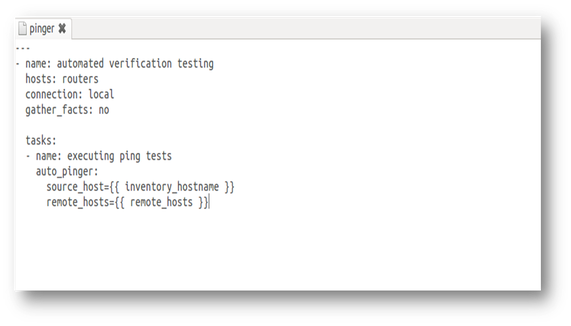

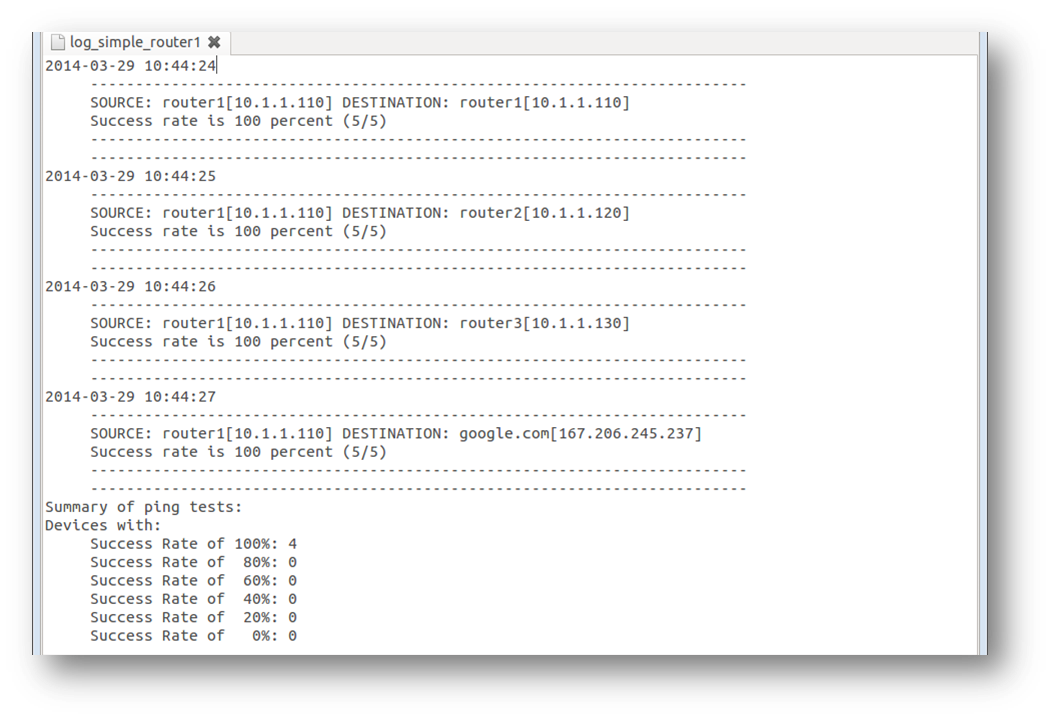
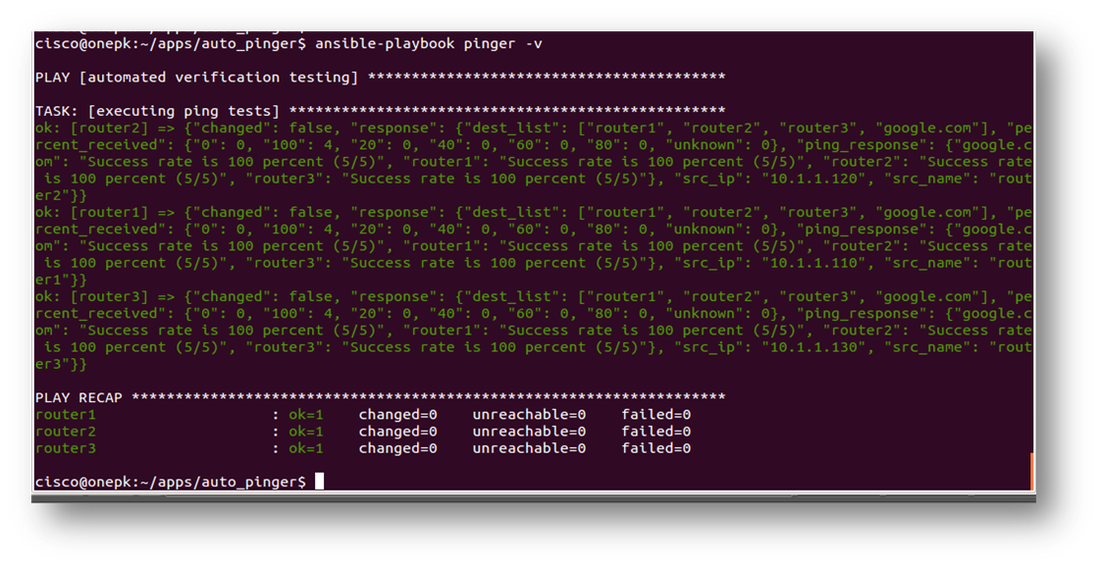
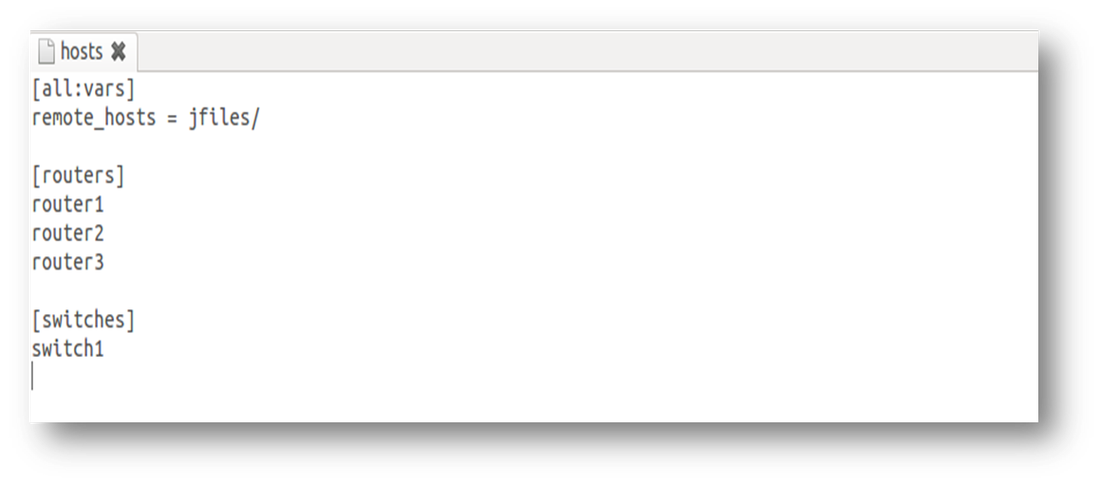
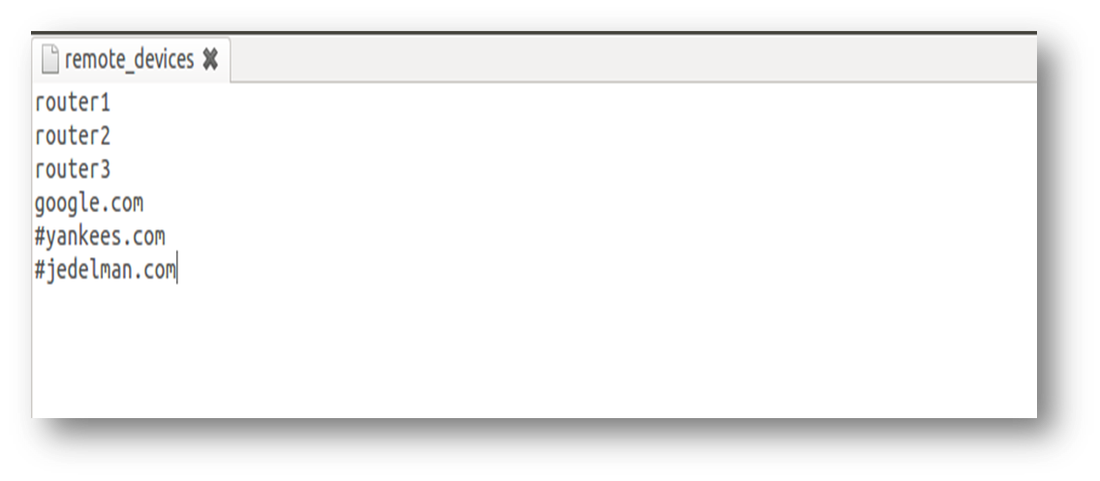
 RSS Feed
RSS Feed
